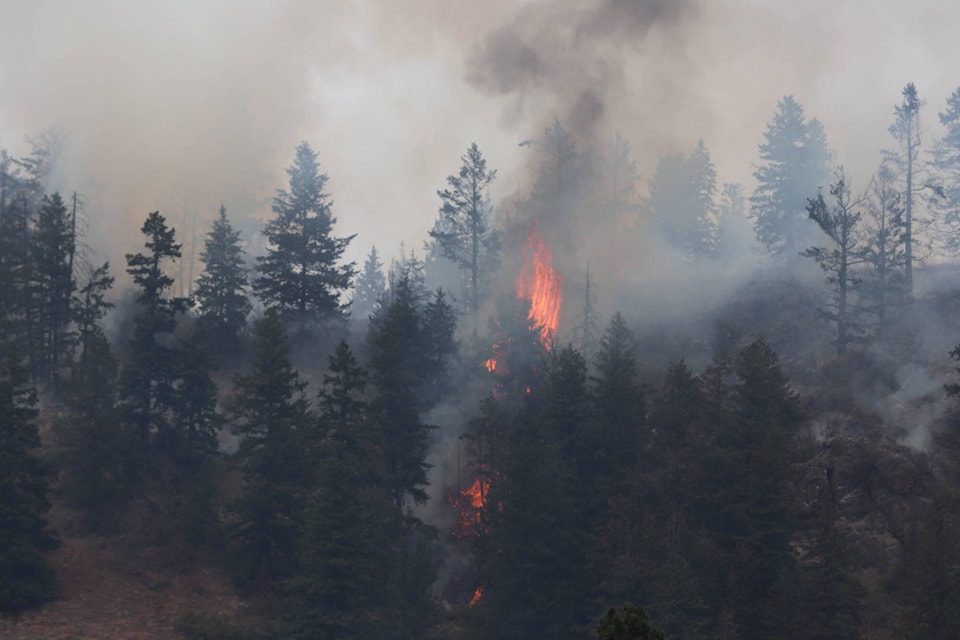With hot, dry conditions after recent thunderstorm activity, fires have been popping up across B.C.
On a drive back to Williams Lake from Kamloops along Highway 24, my passenger spotted smoke on a ridge to the south of our route.
Knowing it is a fairly sparsely-populated part of our province, we turned around to be able to get a better look at the fire, and to gather information in order to call it in.
Despite not having cell phone service at the time, there were some very simple steps we could take to be able to report the wildfire and make sure BC Wildfire Services would be able to respond if necessary.
Returning to a spot where we could see the smoke, we pulled off the road safely and observed to see if we could see any aircraft around the fire, which would suggest BC Wildfire Service was aware of the fire and likely had resources fighting it.
Not seeing any, we began to gather the information to report the fire as effectively as we could.
First was to get a clear location -know the nearest community, city or town, and get coordinates for where you are standing.
Even without cell service, you can get geographic coordinates from a smart phone.
If you have an iPhone, open the compass app (standard on iPhones).
Hold your phone flat in your hand and point the top of the compass at the fire and record the bearing you can see on the app (ex. 236° SW) and the coordinates (ex. 52°7’51”N 122°8’45”).
Estimate how far away the fire is and record this so you can give a location when you report it (ex. approximately five kilometres from these coordinates: 52°7’51”N 122°8’45” on a bearing of 236° SW).
If you have an Android phone and don’t have a compass app installed, open a navigation or mapping app you use for directions.
Google Maps will work just fine. Click on the blue dot showing your location. Even without a base map, your coordinates should then come up with the location information.
Record the coordinates exactly as you see them. If you record them accurately, the dispatcher can convert them to whichever format they need.
Then if you have an idea which direction you are looking, again, provide a rough direction and distance.
You can then tell the dispatcher the fire is located about two kilometres to the south west from these coordinates, for example.
This allows them to map the fire’s approximate location.
Then take other observations if possible and take a photo if your phone or camera can pick up the fire or smoke, this will help you refer back.
Things helpful to note:
fire size (ex. spot fire, the size of a house, the size of a soccer field)
type of fuel it is burning in (ex. heavy forest, open fields, slash piles, etc.)
fire activity; can you see open flames, is there a light-coloured smoke, dark smoke column, does it appear to be moving quickly
anything you can see nearby which may be at risk; are there homes, power lines, roads- near the fire
terrain and access; can you see a road nearby, are there cut blocks close to the fire, is it steep, flat, rolling
water sources; do you know if there is a water body near the fire
Once you have all this recorded, make your way safely into cell service or to a nearby home or business with a phone and call in to *5555 or 1-800-663-5555.
We had to wait for some time to get through, and debated hanging up, but we did eventually get through and provided all the information for the fire we spotted. When we were back in reliable service, we returned a missed call from the fire centre to find out the fire was new and had not yet been reported.
So in the end, the small diversion of time and energy was well worth it.
READ MORE: Wildfire near Williams Lake considered under control by BC Wildfire Services
READ MORE: Wildfire smoke impacting air quality in Cariboo, North Thompson regions
Do you have a comment about this story? email:
ruth.lloyd@wltribune.com
Like us on Facebook and follow us on Twitter.
~ Black Press
